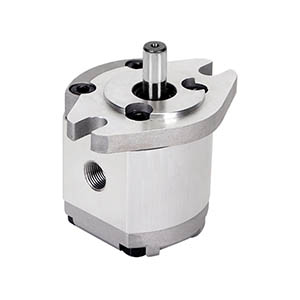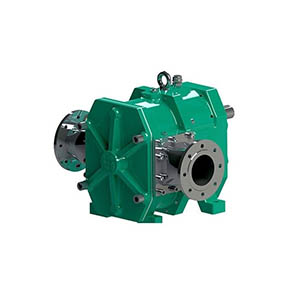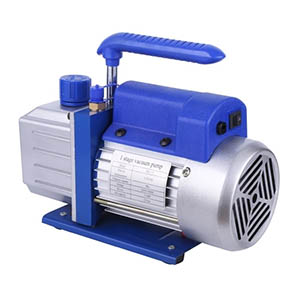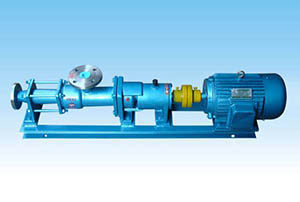What are the Types of Rotary Pumps?
A rotary pump is a rotating pump, which can change the working volume through the relative motion between the rotor and the pump body to increase the energy of the liquid pump, often used in the transport of high viscosity media. So what types of rotary pumps are usually divided into? Let's have a look in the followings.
Rotary Screw Pumps
A rotary screw pump is a volumetric pump, which is composed of a pump casing and more screws. When people carry out irrigation or drainage, they will set pumps waterobliquely, so that the inclination of the pump spindle is less than the that of the screw vane, and the lower end of the screw vanecancontact water. When the prime mover drive the screw pump shaft rotationbythe variable speed device, the water go into the vane, along the spiral type flow channel until up to the outflow. The advantages of screw pumps are simple structure, easy to manufacture, large flow, small taps loss, high efficiency, easy to repair and maintenance.
Rotary Gear Pumps
A rotary gear pump is a rotary pump that convey or pressurize the fluid by the change and movement of the working volume created between the pump cylinder and the meshing gears. It is one of the most common types of rotary pumps in hydraulic fluid power applications. It is widely used in chemical installations to convey high viscosity fluids. The gear pump is composed of two gears, the pump body and the front and rear cover which form two closed spaces, the interior of this shell is similar to the "8" shape, and two gears are installed inside, the outer diameter of the them closely cooperate with the shell. The outer diameter and both sides of gears are closely matched with the shell. When the material from the extruder enters the middle of the two gears at the suction port, it will fill the space and move along the shell with the rotation of the teeth. Finally the material is discharged when the two teeth are engaged. The advantages of rotary gear pump are simple structure, cheap price, and insensitive to oil pollution, large speed range.

Rotary Lobe Pumps
A rotary lobe pump, is a volumetric pump similar to rotary gear pump. The difference with gear pump is that the vanes are designed to almost converge instead of touching and rotating each other. Its rotor is fully covered with spiral three-vane special rubber, which has a high vacuum degree and super resistance to wear and corrosion. The working principle of the rotary lobe pump is to use two rotors with synchronous motion, which are driven by a pair of external synchronous gearboxes. When the rotors rotate drivenin the opposite direction synchronously by the drive shaft, a high vacuum degree and discharge pressure are generated to facilitate the transportation of substances with high viscosity properties, which can pass particles of over 90mm. Because of the strong media throughput, it is suitable for various industries such as pulp and paper, chemical, food, beverage, pharmaceutical and biotechnology.

Rotary Vane Pumps
A rotary vane pump is a volumetric pump that consists of vanes mounted on a rotor. The main type of vane pump in daily life is the vane vacuum pump, where an offset rotor fitted with a slide moves in a rotary motion in the pump chamber, causing the volume of the pump chamber studio separated by the slide to change periodically in order to achieve pumping work. The rotor rotates in the chamber and its vanes possess the function of changing length and maintaining contact with the wall as the pump rotates. In the rotor rotation, vane in the centrifugal force and pressure oil under the action of the tip close to the stator inner surface, so that the two vane, rotor and stator inner surface constituted the working volume, firstly from small to large oil absorption and then from large to small oil discharge, vane rotation a week, can complete a suction and discharge of oil. The rotary vane pump management need to pay attention to these points.
- Need to prevent dry rotation and overload, prevent suction air and suction vacuum larger
- Pay attention to pump steering change, vane pump assembly and disassembly
- Pay attention to the working surface clean
- Timely adjustment of the vane in the lobe groove clearance and vane pump axial clearance

If you want to get more information about rotary pumps, ATO will provide more knowledge you want to know.


